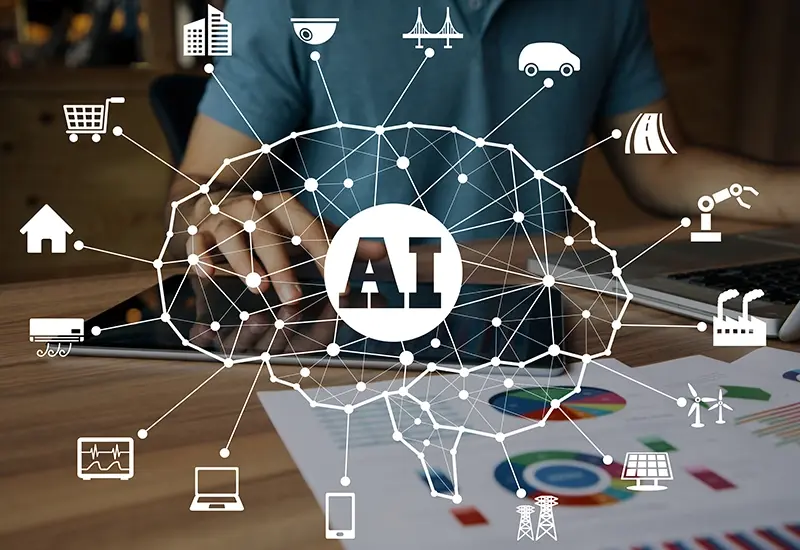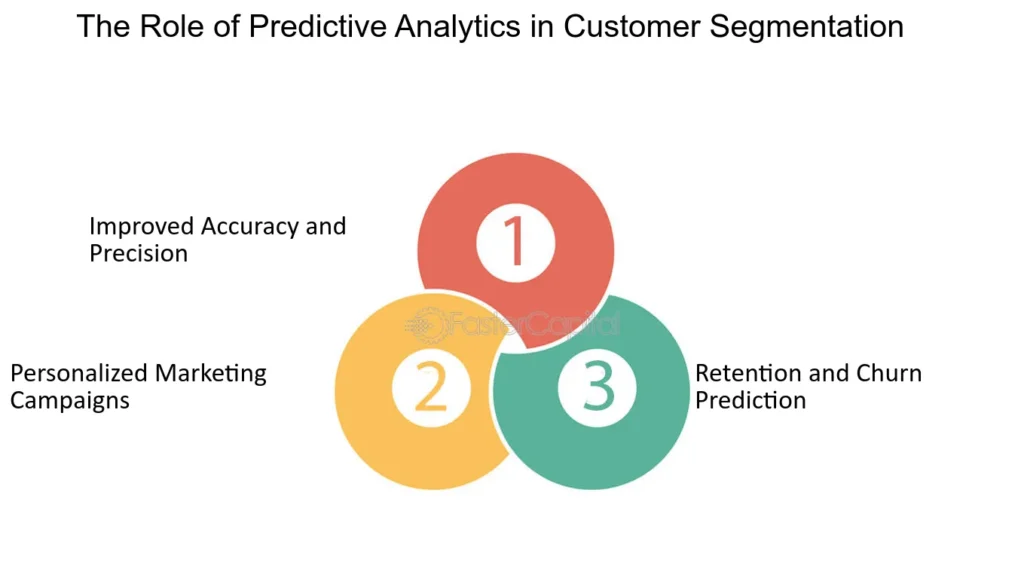
AI play in automating marketing that leverages AI technology to drive automated marketing, reveal functional flaws, and provide best practices.
As artificial intelligence (AI) has grown, in AI play in automating marketing has progressed from rule-based systems to brilliant, adaptable technologies.
According to a Statista poll, 88% of marketing professionals think AI play in automating marketing has helped them tailor the customer journey across channels, and 90% utilize the technology to automate customer interactions.
In this Blog, we have 5 examples of AI play in Automating Marketing . They are:
- Segmenting customers and using predictive analytics
- Highly Customized Content & Suggestions
- Conversational AI & Chatbots
- Considerations of Ethics and Openness
- Better Performance Evaluation & Campaign Optimization
1. Segmenting customers and using predictive analytics

The ability of AI play in automating marketing to evaluate vast volumes of data is its most potent feature. In addition to saving time and money, this facilitates predictive analytics—the process of using that data to generate predictions.
Analyzing previous purchases, for instance, could provide you with information about consumer behavior. Checking for trends can be done on an individual basis.
You can forecast future buying periods or favored offers with this information by segmenting your consumer base according to their behavior or preferences. With this information, you may use the most likely channel to convert and target consumer segments with the appropriate offer at the correct moment
Brand example – Natural Cycles
Natural Cycles is a birth control software that combines body temperature and an algorithm to determine a woman’s reproductive status.
They analyzed user data and behavior trends using the AI play in automating marketing platform Optimove to further target consumers and craft more individualized communications.
Using real-time activity to segment users, the software could customize messaging for each type of customer. Additionally, they could plan more campaigns with fewer personnel and in less time.
2. Highly Customized Content & Suggestions
Chat GPT has changed the marketing industry, especially for content creators and businesses looking to provide large quantities of content formats.
Many alternative programs are currently available that can produce content in response to explicit instructions, such as Claude, Perplexity, Google NotebookLM, and Midjourney.
Recent developments in the creation of text, images, and videos assist marketers in creating product descriptions, email campaigns, and targeted advertisements. Marketers may create visuals from text prompts with AI-powered platforms or AI play in automating marketing like Canva and Adobe Creative Cloud Express.
In order to facilitate hyper-personalization, some marketers are even producing content that changes in real-time in response to consumer attitude and context.
Brand example – Spotify
Spotify uses algorithms made up of AI to create playlists and suggest music based on user listening habits.
As this occurs, users will be able to enjoy more of their favorite music and recommendations according to their preferences from the audio streaming service.
Additionally, Spotify offers a pilot AI speech translation service for podcasts and an AI-powered DJ for premium users.
3. Conversational AI & Chatbots
Businesses from all sectors can use conversational AI to provide more effective and individualized customer care while freeing up the time and resources of their human agents.
For this reason, by 2027, chatbots will account for about 25% of firms’ main customer care channels, according to Gartner’s research.
Chatbots are also developing. Sophisticated natural language processing (NLP) AI chatbots can handle complex queries and can even modify their responses to match the tone and intent of the user. Additionally, they may assist with round-the-clock client assistance without sacrificing quality.
Brand example -Lemonade Insurance
The chatbot for Lemonade Insurance Maya Lemonade, a digital insurance startup, created Maya, a chatbot, to help customers with the insurance purchasing process.
Maya is capable of gathering data, generating quotes, and managing payments. The bot ensures that the client pays within three minutes and receives insurance within ninety seconds.
In addition, Maya enables the business to modify its current policies while chatting with clients to offer personalized responses to challenging queries. Since Maya is a machine learning system, the more customer service it offers, the more intelligent it becomes because every encounter aids in learning.
4. Considerations of Ethics and Openness
By integrating AI into your marketing efforts, you provide the technology access to a multitude of customer and business data. This implies that it is your duty to safeguard the information.
Businesses using AI play in automating marketing must be open and responsible in order to solve these and other ethical issues. Inform customers that your business employs artificial intelligence (AI) and explain its purpose so they can provide their approval or opt-out.
Keyword Ethical Considerations
1. Transparency and Honesty
2. Privacy Protection
3. Authenticity and Integrity
4. Responsiveness and Accountability
Brand example -O2
O2 developed AI Grandma to increase customer centricity and raise awareness of the scam prevention technology of the UK mobile network.
In order to keep scammers on the phone and away from consumers for as long as possible, this campaign developed Daisy, an AI “Granny” that can answer calls in real-time.
O2’s anti-fraud staff placed Daisy’s personal phone number to scammers’ contact lists. She utilizes a special large language model to react after combining AI models to listen to a caller and convert their voice to text.
It’s a fantastic illustration of a company raising brand awareness while pointing out the risks associated with AI and offering a remedy.
5. Better Performance Evaluation & Campaign Optimization
Marketers must be able to track campaign results and optimize campaigns. AI play in automating marketing have solutions can track KPIs and offer real-time feedback and actionable insights, but this could be a time-consuming procedure.
Marketers may use this degree of knowledge to optimize campaigns, identify the best-performing channel (like email), and gain insights on trends or obstacles to maximize the effectiveness of any campaign.
Brand example – The North Face
In order to tailor their customer experience to their tastes, The North Face, an exploration brand, sought to identify what customers sought in each market. The business frequently accomplishes this by continuously tracking how customers look for products on its website.
With the help of Google Tag Manager 360 and Analytics 360, the company found that its clients were looking for a new term: “midi parka.” The business rebranded one of its products to capitalize on this, which resulted in a threefold boost in revenue and conversions.